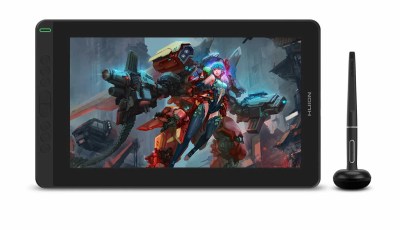Blur Studio on the state of the CG Industry
What size was Blur at its smallest and largest? What major changes had to happen to allow for such growth? How has the atmosphere of the company changed / stayed the same due to these changes?

The Warhammer Online: Age of Reckoning cinematic trailer combines crowd simulation with fire, smoke and all kinds of particle-based effects
We started with the 3 people and 4 computers in ’95, and within a few months we moved into a bigger building and hired a small handful of guys. My memory is a little fuzzy on this, but I think after a year or so we were at 12 or so people, and it stayed there for a couple more years. For a while we grew to 36 or so and stayed there for a while. We’ve been just shy of a hundred for a few years now. When we started out the guys we hired were going to be able to do everything… animation, modeling, lighting, comping, and we were going to pay everyone the same salary… simple, easy to manage, everyone knew what everyone else made, etc. As we got bigger and the projects more complex, we realized our system wasn’t going to work. As much as we wanted to avoid separate "departments", we found we had to hire people who were really good at doing certain things, and the ‘jack of all trades’ way of thinking slowly fell to the wayside. With it went "one salary for all", not necessarily because of the particular job but as we had people who were new (talented, but green), those who had been with us for a while, and those coming in with much more experience than others, the pay had to reflect that.
Also, the management of the artists became much more time consuming. As much as we wanted to keep internal politics and personalities from the daily workings of the studio, the fact is that artists are a fickle bunch, and that stuff did have an effect on how we ran the studio (it took much more time to keep everyone happy).
Two nice benefits at Blur are the job stability (you rarely hire a ton of people for a project and then lay them all off afterwards), and you provide decent health benefits to everyone in the studio. Why did Blur decide that these two benefits are really important when a lot of other companies don’t offer them?
We hire based on talent, and once here, we want to keep that talent. Working in production is not easy, even when you love what you are doing, it’s hard work. So we try our best to treat our guys (and gals) well, via health benefits, cool work, etc.
What is your view of the current state of the CG field? Do you feel it is as exciting as it was 10-20 years ago, or has innovation basically slowed down these past few years?
The 90’s were definitely a big time for CG development. I remember there was new stuff, new programs, plugins, new ways of doing things coming out all the time. When a new version of the software came out (3ds/Max especially), we would all gather around, giddy with excitement playing with the cool new features (yes, we were geeks). Nowadays there is not as much to drool over in new releases, as far as brand new innovative things. That is not to say things have gone stagnant. Advances in rendering, image based lighting, hardware acceleration are all exciting, especially as the hardware gets faster and faster.
How have the needs and requirements of clients evolved since the first years of Blur (and what changes has Blur made in order to meet them)?

A cinematic trailer for BioWare’s Mass Effect 2, featuring impressive CG work with dynamic visuals, fast cutting, hand-held cameras and great sound
Simple… each year they want it to look better than anything else, and they want more of it… for the same price as what they paid last year. Unfortunately, that is the way it is. As the software, hardware, and our abilities get better and faster, we can put out work that looks better and better. That doesn’t mean the client is willing or even able to pay more for it. Hopefully the fact that we can work faster year to year means we can pump better quality work through our pipeline in the same amount of time as we did previously. But the bottom line is that we need to push the envelope, not only for the clients but for ourselves. That is why they come back year after year.
What are the most interesting developments that you see coming up for the future of CG? (in the next 5-10 years)
It looks like hardware rendering may finally be taking off, which should be interesting. Being able to get quicker feedback without the need to constantly be doing test renders should help to speed things up, especially in scene assembly, but also in modeling/texturing.
How has the profession of CG artists evolved from the early days of 3D animation?
I can only answer this from the perspective of Blur, but as stated earlier we tended to be more all around people, now we have dedicated modelers, animators, riggers, cloth/hair people, etc. The one thing that we still have not split up is lighting/rendering/compositing. We simply refer to those steps as "Scene Assembly", and our scene assemblers take all the models, animation, etc., in raw form, put them together into a shot and see it through to final. We also, overall, have much better realtime (or close to it) feedback of what we are doing, due to the advances in hardware and software.

A gopher is on the look for tasty vegetables in Gopher Broke (2004), a short film directed by Jeff Fowler and scored by LA-based composer Rob Cairns
Any features developed for Max that were a direct result of Blur’s feedback?
I’m sure there were, I can’t remember any features specifically, but way back we had a very close relationship with Gary Yost and the Yost group (the original developers of 3ds and Max), and were very active in the development of the software. Unfortunately, I can no longer say we are, as with schedules the way they are we just can’t risk using alpha or early beta software in production (at least not the key programs like Max). We submit our wishlists as always, but we are not as intimately involved as we were in the past.
Blur recently turned 15 years old, and got there producing top-notch art and enjoying worldwide recognition. What pending debts do you feel the studio has?
We turned 15 in April. I’ll just have to come to terms with the fact that we likely have a good portion of our guys who were only between 5 and 10 years old when we started the studio 😉 Our main goal of Blur has always been to do our own features. While we have done many other projects, a lot that we are very proud of, our own movies are still the end goal. It’s been a long time coming, but as we have learned, it’s not a quick process to get one to the point of having the money in pocket to actually start production. We are however, closer than we have ever been. We are in development of a few feature projects, including "The Goon" but the one we are closest on is "Heavy Metal", which we are developing in house with David Fincher. There are a number of talented directors who have expressed a strong interest in supporting the film and directing segments.
What are your hobbies/activities? What do you enjoy doing when you’re not working?
Building models… real ones, not CG :-). I was into racing karts for years, but it’s been a while since we’ve been out… nothing like racing a kart capable of 100mph on the edge with your butt 1 inch off the ground… literally. Lately my spare time is taken up by RC Helicopters. I admit it. I like my toys… what can I say…
If you could move Blur from Los Angeles to any city in the world, what would it be? Or is LA the place to be?
I’m sure there are plenty of cities I’d like better than LA, but for doing what we do, LA is really the best place to be.

It can all start with a whale. David Stinnett’s image led him to meet Tim Miller, with whom he would eventually co-found their company: Blur Studio
What’s the story with the Whaleboy name?
That is really Duane Powell’s fault (one of Blur’s founding partners). That was his nickname for me. Why? The first CG image I ever did (that I publicly released) was of a whale, done in 3D Studio DOS v2 (or was it 3?). I did a 30 second animation of it soon after, and it made it on the 3dstudio reel. The whale image is what caught the eye of Gary Yost, and got me on the 3DS beta group. Gary got me in touch with Sony, which led to Blur… all from that little CG whale.
What is the current favorite video game played at the studio?
Believe it or not, it’s still Quake 3. We still have our daily 45 min game, although I’m ashamed to admit it’s been ages since I’ve played. We’ve tried other games, and a small group of us did Battlefield for a while, but the simplistic fun of Q3 has lasted the test of time. But I do have very fond memories of working (well, kinda…) until 3am playing Doom2, Descent, and of course Duke Nuk’em. Ah, those were the days…
Many thanks to David Stinnett for sharing with us his experiences from years of working at Blur, and his views on the evolution of the CG industry.
Images courtesy of Blur Studio. All images are the property of their respective owners, no content may be used without the express written permission of its owners. Editing and layout by Pablo Hadis. All other content is copyright © CGPress.
Notes:
- Blur Studio produced several shorts and promotional pieces for Discreet (now Autodesk Media & Entertainment). One of the funniest ones is Mingo (a.k.a. “Mingo the clown-o”). The short was made in 2001 and parodies the character from Chris Landreth’s “Bingo”. According to Blur’s Tim Miller, the video acted out what a lot of people in the business would’ve liked to do: “beat the crap out of that clown”. The video can be found on You Tube.
- A trailer for David Fincher and Blur Studio’s upcoming animated feature film “The Goon”, based on Eric Powell’s comic book, is now available. The video can be found on You Tube.







